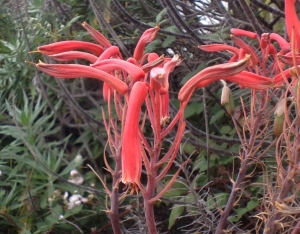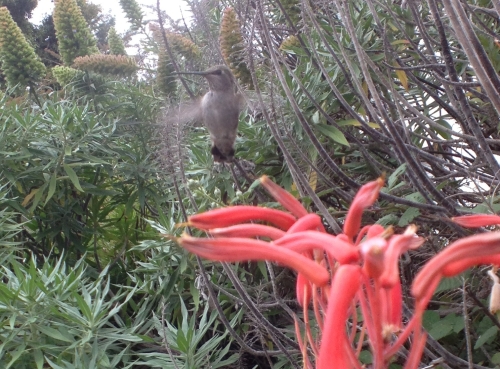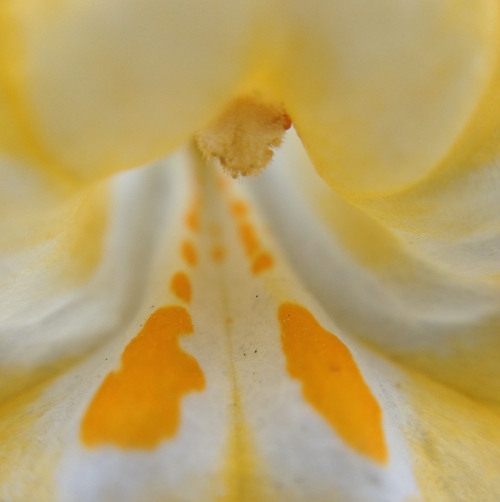After writing a post on pollinator syndromes , I decided a fun weekend project would be to photograph some flowers in my neighborhood that were good examples of what attracts certain types of pollinators.
I started with the following plant, which I thought would be a great example of something that would attract a hummingbird:
Birds are attracted to the color red, and the long tubular flowers are the perfect shape for long, thin hummingbird tongues. Sure enough, within 30 seconds a hummingbird arrived at the scene.
Here are some of the other flowers I photographed on my walk around the block:
The color and shape of the wild radish (Raphanus) flower looks like it would be attractive to bees, flies, and possibly butterflies.
The purple color is attractive to butterflies, and the tubular shape of these flowers make them ideal for butterfly probosces. The position of the anther (the structure that holds the pollen) and the stigma (receptive part of the female structure) above the flower means it will come into contact with butterflies visiting to drink nectar. Because they are in clusters, they have enough surface area for the butterflies to land when they drink.
The patterns this flower are likely “nectar guides,” or patterns that guide insect visitors to the nectar reward at the base of the flower. Nectar guides are often found on bee pollinated flowers.









What a fantastic blog post. Thanks for making information about pollinators fun and easy to learn. I like your “bite-size” posts. 🙂
Anne
Anne Schellman
Urban IPM Educator
UC Statewide Integrated Pest Management Program (UC IPM)
University of California Agriculture & Natural Resources
530-750-1240
From: Diadasia
Reply-To: Diadasia
Date: Sunday, July 12, 2015 at 3:08 PM
To: Anne E Schellman
Subject: [New post] Pollinator Syndromes Part II: The Birds and the Bees
diadasia posted: “After writing a post on pollinator syndromes , I decided a fun weekend project would be to photograph some flowers in my neighborhood that were good examples of what attracts certain types of pollinators. I started with the following plant, which I th”
Thanks for your kind words! I always have to censor my desire to give too much information, so it is reassuring to hear that you like the length of my posts.
Love the fast, fun facts! And the photographs are great.